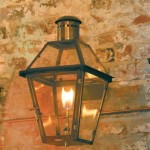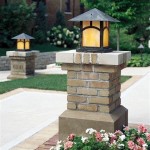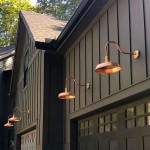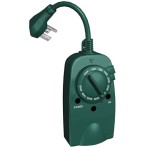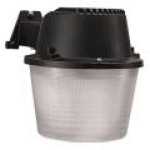Outdoor Ground Lighting Ideas
Outdoor ground lighting, also known as pathway lighting, is a versatile and effective way to enhance the ambiance and functionality of your outdoor spaces. Ground lights, discreetly nestled within the ground, illuminate pathways, accentuate landscaping features, and create a welcoming atmosphere. From subtle, ambient glow to dramatic, focused beams, ground lighting offers a wide range of options to suit diverse outdoor design styles and needs.
Types of Outdoor Ground Lighting
There are numerous types of outdoor ground lighting to choose from, each with its unique characteristics and applications.
- Path Lights: These lights are typically installed along walkways and pathways, providing a safe and visually appealing guide for pedestrians. Path lights come in various styles, including bollards, lanterns, and modern minimalist designs.
- Well Lights: These recessed lights, installed in the ground, are ideal for illuminating trees, shrubs, and other landscaping features. Well lights offer a focused beam of light that highlights the subject without overpowering the surrounding area.
- Uplights: As the name suggests, uplights direct their light upwards, illuminating trees, walls, or architectural features. They create a dramatic effect, adding depth and dimension to the landscape.
- Downlights: Downlights project their light downwards, creating a soft and diffused illumination. They are often used to illuminate walkways, patios, or seating areas.
- Step Lights: These small, discreet lights, mounted on stairs or steps, provide safety and visibility, preventing accidents during nighttime use.
Key Considerations for Selecting Outdoor Ground Lighting
When selecting outdoor ground lighting, several key considerations will ensure a successful and functional installation.
1. Lighting Purpose and Functionality
The primary purpose of the lighting should be determined first. Is it for safety, aesthetics, or both? For example, path lights prioritize safety and visibility, while uplights enhance the visual appeal of landscaping elements. Defining the purpose will guide the selection of light type, placement, and intensity.
2. Light Color and Temperature
Light color and temperature significantly impact the ambiance and effectiveness of ground lighting. Warm white (2700K to 3000K) offers a cozy and inviting atmosphere, while cool white (4000K to 4500K) provides a brighter and more functional illumination. The choice depends on the desired atmosphere and application. For example, warm white might be preferred for pathways, while cool white could be suitable for security purposes.
3. Lighting Intensity and Distribution
The intensity and distribution of light are crucial factors influencing visibility, safety, and overall effect. For example, brighter light is necessary for safety along walkways, while softer light can be used for accentuating landscaping features. The chosen light type, bulb wattage, and installation angle influence the intensity and distribution of light.
4. Material and Style
Outdoor ground lights are available in various materials, including metal, plastic, and stone. The material selection influences the durability, aesthetics, and suitability for the outdoor environment. The style should complement the surrounding architecture and landscaping, creating a cohesive and visually appealing design.
5. Energy Efficiency and Sustainability
Energy-efficient LED bulbs are now the preferred choice for outdoor ground lighting. LEDs offer long lifespan, reduced energy consumption, and minimal heat output, making them a sustainable and cost-effective option. Consider opting for solar-powered ground lights for further energy savings and environmental friendliness.
Practical Tips for Outdoor Ground Lighting
Here are some practical tips to enhance the effectiveness and aesthetic appeal of outdoor ground lighting:
- Plan the layout carefully. Consider the purpose of each light, the path of lighting, and the overall effect you desire.
- Use a variety of light types and styles to create visual depth and interest. Combine path lights with uplights and well lights to achieve a multi-layered lighting scheme.
- Install lights at a suitable height. Path lights should be low enough to illuminate the walkway without creating glare, while uplights should be positioned to highlight the desired feature.
- Choose the right bulb wattage. Higher wattage bulbs offer brighter light but may consume more energy. Consider the desired intensity and choose the appropriate wattage for each light.
- Regularly maintain and clean your lighting fixtures. Dust and debris can reduce light output and shorten the lifespan of your lights. Regular cleaning ensures optimal performance.
Outdoor ground lighting can significantly enhance the functionality, safety, and aesthetic appeal of any outdoor space. By carefully considering the key factors and incorporating practical tips, you can create a welcoming and visually stunning environment that extends the enjoyment of your outdoor areas beyond daylight hours.

68 Inspiring Landscape Lighting Ideas For Outdoor Spaces Design Front Yards

Garden Outdoor Lighting Ideas 9 Inspiring To Light Up Your Backyard

Landscape Lighting Ideas For Your Front And Backyard The Home Depot
Outdoor Lighting Ideas 10 Designs Architecture Design

55 Outdoor Lighting Ideas To Make Your Facade Look Stylish And Trendy

Garden Outdoor Lighting Ideas For Your Little Paradise Design Bollards

Designing A Landscape Lighting System Ideas Advice Lamps Plus

Outdoor Lights Garden Exterior Rooms

10 Best Outdoor Lighting Ideas Landscape Design Secrets Front Yards Backyard
Outdoor Lighting Ideas 10 Designs Architecture Design
Related Posts
